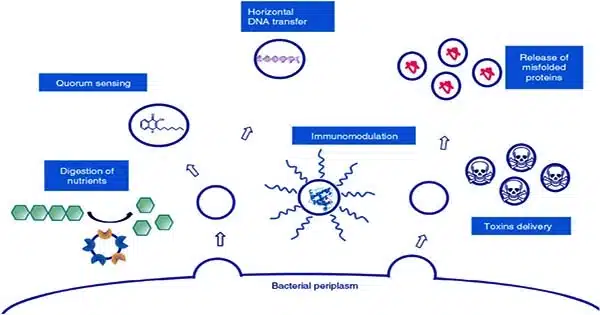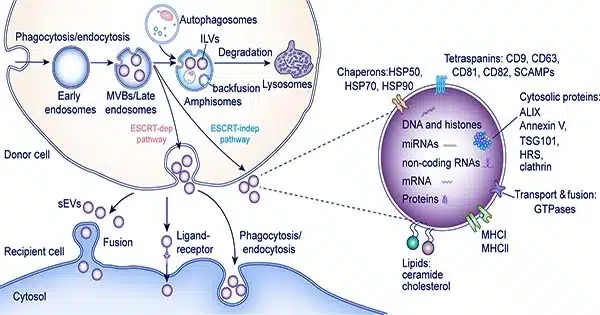Researchers led by Susanne Erdmann of the Max Planck Institute for Marine Microbiology in Bremen examined previously discarded data, revealing the previously underappreciated role of extracellular vesicles (EVs) in exchanging genetic information between cells and emphasizing their importance for the sea’s microbial community.
The seas’ many microbes are constantly exchanging genetic information. This horizontal gene transfer (HGT) is critical for the development of many organisms and is the primary mechanism for the spread of antibiotic resistance in bacteria, for example. Until now, it was considered that gene exchange was mostly caused by direct contact between cells, free DNA, or viruses.
The study, which was just published in ISME Communications, demonstrates that extracellular vesicles are also critical for the transfer of genetic information in the sea, and consequently for the survival of its smallest residents.

Viruses, GTAs, and EVs are all little and numerous: The majority of viruses are really small. Every drop of seawater contains up to ten million of them. They can carry not only their own genetic material (genome) but also bits of their host’s DNA—that is, the DNA of the organism they have infected—into other cells.
Virus research is difficult. To separate the viruses from the cells, seawater samples must be filtered through filters with pore sizes of only 0.2 m (approximately 300 times smaller than the thickness of a human hair). These filtered samples contain viruses as well as gene transfer agents (GTAs) and extracellular vesicles (EVs).
GTAs are virus-like particles that only package host DNA, whereas EVs are small vesicles enclosed by a membrane that detach from the host’s cell surface. These EVs may contain a wide range of chemicals. They frequently transport DNA fragments in addition to enzymes, nutrients, and RNA.
EVs are prolific genetic material carriers: Erdmann and her colleagues have recently demonstrated that contrary to popular belief, there is a significant amount of host DNA in the filtered seawater samples that are not transferred by viruses. It was incredibly difficult to demonstrate this. “After sequencing, i.e., reading out the host DNA, we can no longer recognize how it got into our sample,” Erdmann, head of the Max Planck Research Group Archaea Virology at the Max Planck Institute in Bremen, explains. “There is no feature to assign a sequence to a specific transport mechanism.”
The researchers used a method to tackle this difficulty. They began by assigning each DNA sequence to the host from which it originated. Then, for each host, they determined a primary transport mechanism, such as viruses, GTAs, or EVs. This allowed them to associate a possible transport mechanism with a specific DNA sequence. “The result was surprising: Apparently, a large proportion of the DNA was not transported via classical routes, but via extracellular vesicles,” Erdmann said.
There is so much more to the ocean and beyond than rubbish: “Extracellular vesicles have long been thought to be cellular waste.” Only in the last 15 years have scientists been able to demonstrate their varied cell activities. “Our study clearly demonstrates the fundamental role that EVs play in the exchange of genetic material between cells,” says Dominik Lücking, a student in Erdmann’s group and the paper’s first author.
As a result, the scientists propose a shift in terminology: “Traditionally, when extracting and sequencing the DNA from the 0.2 m fraction, we are talking about a virome, a metagenome enriched with viruses,” adds Lücking. “However, we miss out on the diversity of other, non-virus-like particles in this fraction, such as EVs.” As a result, we propose naming this fraction ‘protected extracellular DNA,’ or peDNA.”
The data reported here establishes the groundwork for future studies on peDNA in all habitats, including the ocean. “The new nomenclature will enable us to talk more clearly about the mechanisms and processes not covered by the term virome,” Erdmann said.
This study can be used as a guideline for future research to analyze the role of extracellular vesicles in different ecosystems, such as soil and freshwater systems or the human gut. “In view of the significance of horizontal gene transfer in many ecosystems, we are very sure that there are quite a few more surprises on the way ahead of us,” Erdmann said.
















